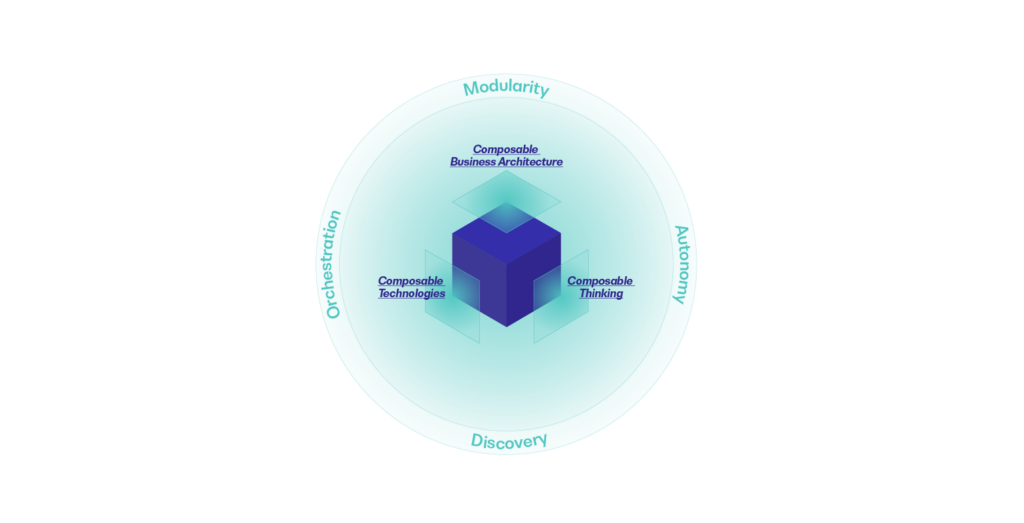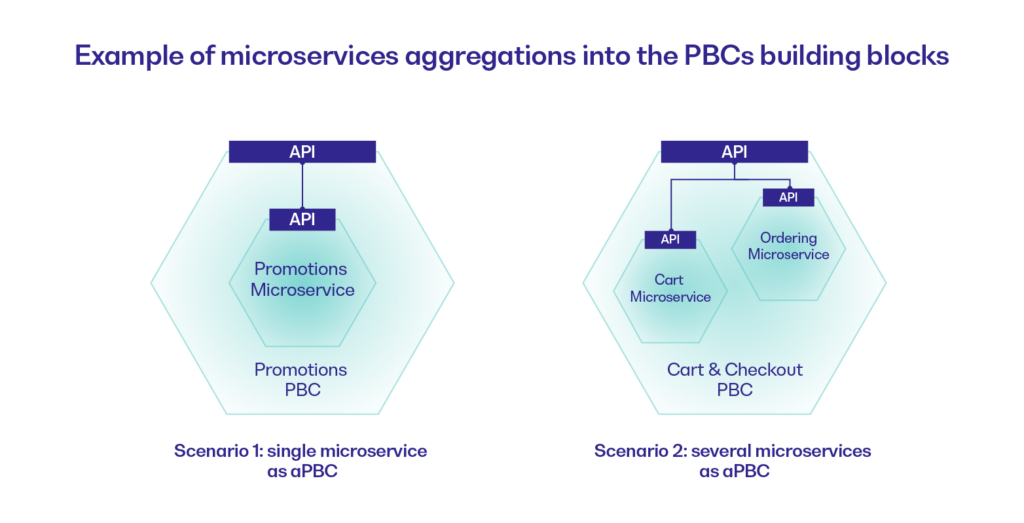Composable business: How a best of breed approach helps companies stay ahead of the curve
Composable businesses can adapt quickly to a changing world. This post explains composability, packaged business capabilities and how your business can benefit.
Table of contents
Intro
This article will discuss one of the newest concepts to enter the world of digital business: composability. Composable businesses are able to adapt to a rapidly changing world, leveraging flexibility and customization to stay profitable even as supply chains and customer demands change. It is seen as a crucial concept that will give adopters a massive competitive advantage over monolithic enterprises.
You’ll learn what composability is and why it is so essential in the modern world of business. We’ll also discuss how your company can benefit from concepts like “best of breed” and “packaged business capabilities (PBCs).” Find out how PBCs are different from microservices and what companies need to do to become more composable.
What is composable business?
The world is changing. That’s something that’s been obvious to all of us for many years. The digital revolution has already changed the face of business beyond recognition in many verticals. And the changes show no signs of slowing down. As consumer habits and demands rapidly evolve, businesses need to be able to adapt. And there’s a new wiz kid on the block that promises to help businesses do exactly that. Meet: composability.
Composability is a way of designing software and business processes modularly for maximum adaptability. Think of it as the difference between a home made of bricks that are held together with mortar vs. a home where individual rooms can be added, removed and rearranged when the need arises.
For a family, this would mean the flexibility to change things over a lifetime — as kids are born, grow up and need more space, and eventually move out and leave an empty nest. In composable business architecture, it’s much the same: different software capabilities can be added, changed or jettisoned as the business changes and adapts.
Gartner defines a composable enterprise as: “...an organization that delivers business outcomes and adapts to the pace of business change. It does this through the assembly and combination of packaged business capabilities (PBCs). PBCs are application building blocks that have been purchased or developed”. Uniform reports a stunning prediction by Gartner, Inc.: “...by 2023, organizations that have adopted an intelligent composable approach will be able to implement new features 80% faster than their competitors who have adopted a suite or a bespoke approach”.
Why is composability essential for enterprises?
When companies are faced with changes—things like supply chain shortages, sudden changes in buying behavior, or new regulations— they need to be able to adapt and pivot quickly and efficiently. Every day lost is profit lost. Time is of the essence. Even comparatively minor changes in consumer behavior, such as “double screening” in front of the TV, can require companies to react and adjust their marketing or sales channels.
The pandemic has shown us how quickly things can change. The Harvard Business Review discusses how many businesses, ranging from digital giants like Spotify to small mom and pop restaurants, had to quickly adapt their offerings to remain profitable when Covid hit and the world went into lockdown. “As demand has soared for essential products, consumer-goods powerhouse Unilever has pivoted to prioritize its packaged food, surface cleaners, and personal hygiene product brands over other products, such as skin care, where demand has fallen,” they report. This highlights the need for adaptability: businesses need to be able to change and restructure quickly and efficiently.
And as vaccines have been rolled out and the most intense phase of the pandemic shows signs of abating, companies are still faced with uncertainty. How will the world look going forward? What unexpected developments in consumer demand, transportation, or regulation can we expect post-Covid? No one really knows. The smartest companies will keep their eyes open, track ongoing developments and adapt accordingly.
The essentials of composable business
Gartner names four essential principles and three basic building blocks for composable businesses. The four principles are:
- Discovery — for more speed
- Modularity — for greater agility
- Orchestration — for better leadership
- Autonomy — for greater resilience

When combined with the four principles above, the following building blocks “enable organizations to pivot quickly,” says Gartner:
- Composable thinking: much like the more familiar “agile” thinking, this means staying on your toes and incorporating the four principles of composability into your decision making whenever possible. Look for new possibilities that might not be obvious at first.
- Composable business architecture: this is where the modular “lego blocks” come into play. Your business should be structured so that you can rearrange dependencies and responsibilities as needed. Built in flexibility is key.
- Composable technology: the tools that will support your composable business architecture. These should be modular, so that they can be used in whatever ways are required in the future.
How can businesses become composable?
Composability starts with mindset. As you begin to think about the building-blocks approach to designing your business, you can start with some forward-looking questions. What your company might need to deal with in the next 3-5 years. What factors could affect your business? How might the market grow and change? How could customer values, desires and needs change? What business models or products will be current?
Having answered those questions, you can begin to imagine how the modular components of your business might be put together to deal with different scenarios. But that’s not to say that you have to come up with a solution to every potential problem—quite the opposite. This exercise will help you to think modularly, to get into the composable mindset. And with that mindset and the right technology, you’ll be perfectly positioned to react quickly to whatever the future brings.
First composable mindset, then composable technology
Once you’ve done the strategic thinking, you can start looking for the appropriate technology to help you meet those goals. As the company enonic discusses: “Composable shifts the focus from monolithic software suites and hosting to the following: Your organization instead chooses the best of breed solutions from a variety of online services and platforms.”
What is best of breed (vs. best of suite)?
When you follow a best of breed approach, you’ll pick and choose different software solutions to meet specific needs in different areas of your business. Rather than purchasing a full suite of software (best of suite) that is designed to meet all your business’s needs with a predefined set of capabilities, best of breed lets you decide which capabilities you really need in different parts of your business.
For example, if you need a specific software feature for your accounting department, but warehousing needs a different specialized feature, you might be hard-pressed to find a software suite that meets both those needs. And a suite might include a number of features that you don’t need at all.
With best of breed, you choose from different microservices or packaged business capabilities (PBCs) to build a solution that fits the specific needs of your business. It’s a more complex approach but gives you much more flexibility.
What are packaged business capabilities?
Packaged business capabilities (PBC) are a key part of any best of breed approach. You could think of them like lego blocks in software form. The digital services provider Walkme defines PBCs as follows:
“Packaged business capabilities (PBCs) are applications or services developed around a particular business function. A PBC serves a specific business capability. It’s a business service that can stand on its own—totally autonomous—and be used by the end client.”
PBCs are similar to microservices — and in some cases, a single microservice could actually be a PBC. But in most cases, a PBC is a bundle of a few different microservices, all of which work together to offer a certain business capability. They offer some of the ease of use of a software suite — the simplicity of a single user interface and the guarantee that all the parts will work together out of the box — but also give you the freedom to pick and choose the capabilities that your particular business needs.

Composability in a nutshell
So a composable business is a modular business. Business areas are modular, as is the technology that is used. When you implement a composable approach in your business, it’s essential to start with a composable mindset first and foremost. Apply the four basic principles and three building blocks of composability to your decision making and business forecasting. Then, once you have an idea of where you want to be headed, look for composable technology that will let you stay flexible no matter what happens next in the world. Best of breed approaches using packaged business capabilities and microservices are far more flexible than a monolithic software suite — and that flexibility will be key to staying relevant and profitable in the future.

Evaluation methodology.
Working together with scientists and industry leaders from the respective cloud areas, our evaluations are based on an industry peer review standard that meets the highest standards of objectivity. All the insights are combined in a single figure, which means they can be applied more easily and effectively from both a technical and a business perspective.
















